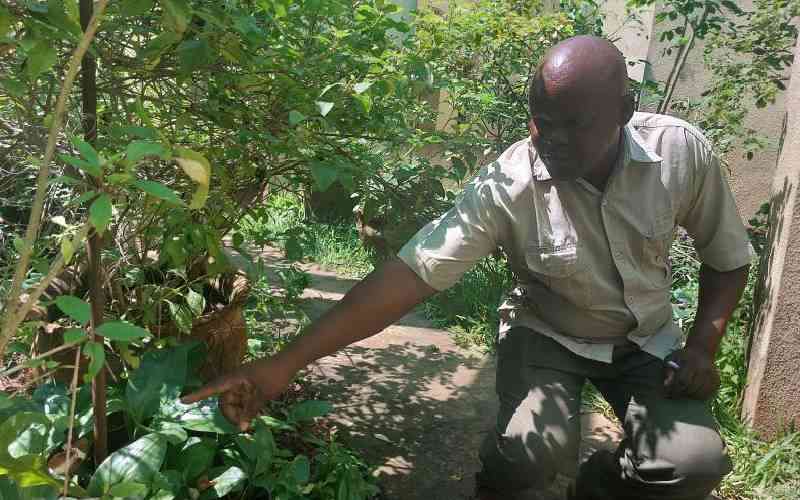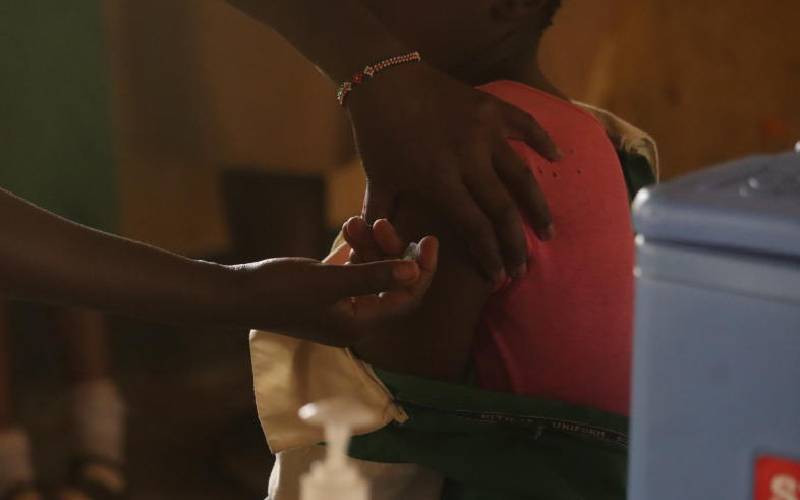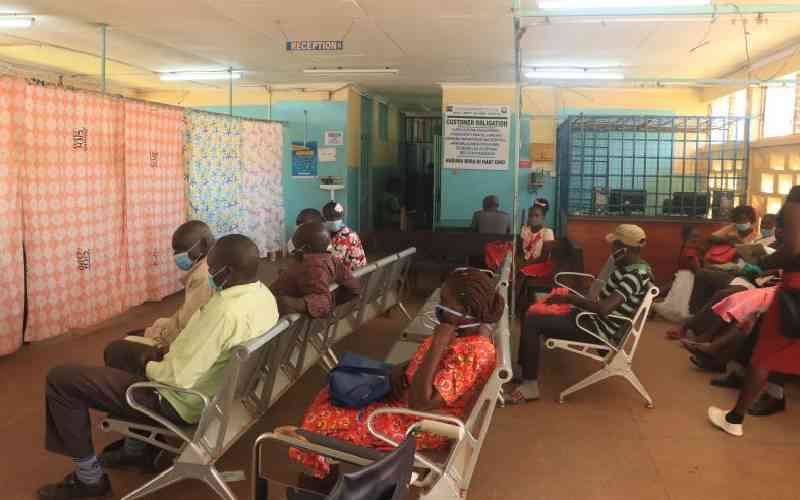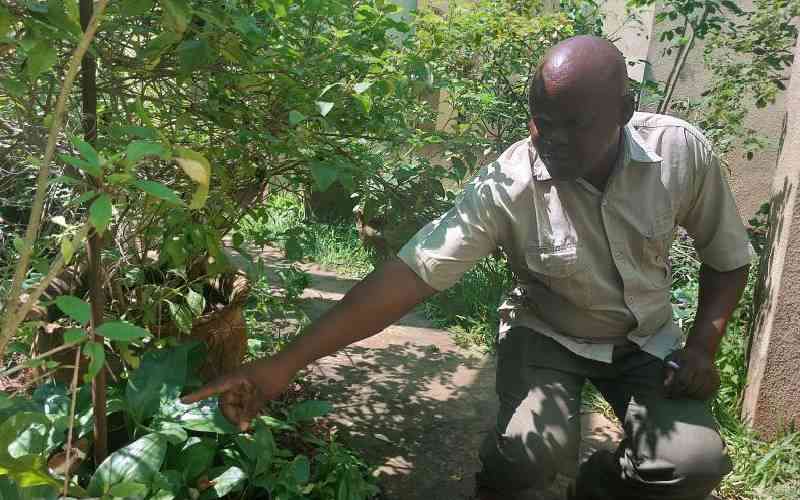
Sara Mwaringi at the Kipepeo butterfly farm, Gedi, Kilifi county. [File, Standard]
Every Thursday, a quiet ritual takes place at the Kipepeo House in Gedi, nestled within the Arabuko-Sokoke forest in Malindi.
Hundreds of butterfly farmers stream in to deliver precious cargo destined for export-butterfly pupae.
For others like Dickson Mbogo, a seasoned butterfly farmer who has been in the trade for close to two decades, this ritual has made him an expert.
Mbogo knows how to spot the promise of tiny wings whenever he holds a tiny pupa up against the sun.
He can also tell if the wings will be disfigured by expertly analysing the butterfly in its pupal stage.
“Farmers bring in pupape, upon which we sort them out and according to the species types and package them for export. During sorting, we also pick out those that have been attacked by parasites because they cannot make for the market,” Mbogo said.
Lately, the number of butterfly pupae being attacked by parasites have increased, according to farmers. Extreme weather events, they say, pose a challenge to butterfly farming for export, a trade that has been going on for decades.
Fluctuating weather patterns leads to a drop in butterfly populations and decline in the number of pupae available for export.
According to Karisa Msanzu, rearing butterflies for export currently require a highly-controlled environment given that the current fluctuating and extreme weather patterns does not favour the farming.
Msanzu, who has been actively engaged in the trade as a farmer for the past 14 years noted that while the butterflies use to pupate well in the past, the weather patterns demand cooling of the environment which the butterflies live in sometimes.
“Butterflies require some sunshine and rain. Too much rain brings about parasites and we lose a lot of them. The fruit trees that butterflies feed on tend to get very tough during drought and that affects pupae too,” Msanzu said.
“Sometimes during the drought, we irrigate the greenhouses where we farm the butterflies to bring down the temperatures,” he said.
But it is not only climate change that is devastating butterfly farmers. While the demand of butterflies for export is high, markets are becoming fewer.
Kenya is currently exporting to one country within the EU, as compared to different markets some years ago.
“We need to diversify the markets because there are so many butterflies that remain behind because the demand is low. The government should help us as farmers to source for opportunities in countries with a growing interest in nature-based tourism like Asia and the Middle East,” he said.
Msanzu said that a few years ago, the trade was doing well as there were many markets that Kenya supplied to. This also enhanced conservation efforts.
Kenya is one of the leading exporters of butterflies with a high potential, the global market for butterflies is competitive, and farmers must consistently produce high-quality pupae to maintain their market share.
Butterflies are often exported to countries like Europe and the US for butterfly exhibitions and events with peak demand during spring and summer in the importing countries.
Given the butterflies’ transitional stages, the farmers still face logistical challenges to have the cargo reach the destination within 24 hours.
Initially before the Covid-19 pandemic, the farmers were using Kenya Airways but the prices have since risen. Currently, the farmers are using Ethiopian Airlines as it is cheaper.
“Shipping costs are so high and that is why we are resorting to Ethiopian Airlines at the moment. We also have to deal with irregular and unpredictable flight schedules, which is a major concern, as the short window for transport is critical,” Mbogo said.
Nature Kenya's Coast Conservation Coordinator Francis Kagema, observed that Kenya's coast is experiencing significant changes in its weather patterns, driven by global climate change. He said that these changes have affected some species that are slow to adapt.
“The weather in Kenya’s Coast has really changed over time and species like butterflies, which are slow to adapt the weather in coast have really changed and the butterflies are slow to adapt. They are very sensitive to rain,” Kagema said.
He said that the government should be vibrant in supporting nature-based enterprises like butterfly farming by exploring new opportunities for farmers who are already navigating the challenges of climate change.
 The Standard Group Plc is a multi-media organization with investments in media
platforms spanning newspaper print
operations, television, radio broadcasting, digital and online services. The
Standard Group is recognized as a
leading multi-media house in Kenya with a key influence in matters of national
and international interest.
The Standard Group Plc is a multi-media organization with investments in media
platforms spanning newspaper print
operations, television, radio broadcasting, digital and online services. The
Standard Group is recognized as a
leading multi-media house in Kenya with a key influence in matters of national
and international interest.











